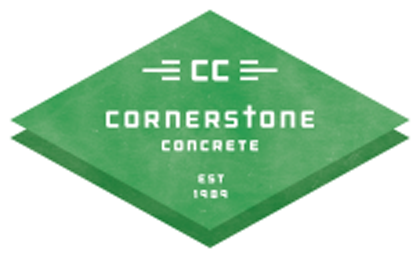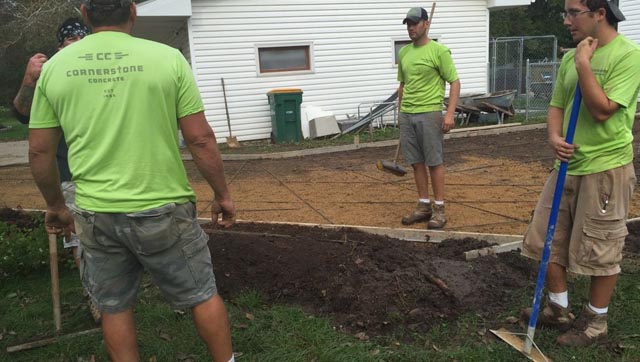- Rebar provides traditional strength and stability.
- Fiber mesh enhances crack resistance and flexural strength.
- Minnesota’s weather makes both reinforcement methods valuable
When it comes to constructing a strong and durable residential concrete driveway, choosing the right reinforcement method is crucial. Rebar and fiber mesh are two common options that provide enhanced strength and longevity in their own ways. Pouring a concrete driveway in Minnesota’s diverse weather conditions necessitates strong reinforcement. Two popular methods are rebar and fiber mesh, each offering unique benefits. Whether you are a homeowner planning to install a new driveway or a contractor seeking the best reinforcement option, understanding these techniques will help you make an informed decision. Explore the differences between rebar and fiber mesh reinforced concrete driveways, considering their benefits and drawbacks.
The History of Rebar Reinforced Concrete
Rebar reinforcement is a widely-used method for reinforcing residential concrete driveways. This is because rebar grid reinforced concrete has been around since the late 19th century, thanks to engineers like Joseph-Lois Lambot. People needed a way to bring additional strength to the concrete they were pouring, bringing rebar grids into the picture; adding more tensile strength and reducing cracking.
Over time, different materials were introduced to advance the strength seen, like stainless steel. Rebar grid reinforcement became more and more popular as its reputation for handling heavy loads, strength, and durability became more well-known, which is why they have become a standard in the industry.
Advantages
1. Strength and Durability:
Rebar reinforcement significantly improves the tensile strength of concrete, making it better equipped to handle heavy traffic and resist cracking over time. The steel bars are strategically placed in a grid pattern within the concrete, providing stability and load distribution.
2. Stability in Variable Conditions:
Minnesota’s freeze-thaw cycles and temperature fluctuations challenge residential driveways. Rebar stabilizes concrete, minimizing structural damage from these conditions. Rebar reinforcement helps the concrete withstand these challenges, reducing the risk of cracks and structural damage caused by freeze-thaw cycles or soil movement.
The History of Fiber Mesh Reinforced Concrete
Fiber mesh or fiber reinforced concrete does not have as far back of a history as rebar does. The use of fibers in concrete to help reinforce strength gained traction in the late 20th century.
Researchers started searching for alternatives to steel reinforcement in the mid-20th century, starting with asbestos fibers. However, this was discontinued because it was affecting the health of the researchers (obviously). In the 1970s and 80s synthetic fibers, like nylon and polypropylene, were being introduced and offering far better performance, providing improved tensile strength and crack resistance.
As the research advanced, different types of fibers were produced, like micro and macrofibers. Fiber mesh came around in just the past few decades, becoming a new staple of the construction industry.
Advantages
1. Enhanced Flexural Strength:
Fiber mesh reinforcement significantly improves the flexural strength of concrete, which is essential for driveways that endure heavy vehicle loads and surface movement (like frost heaving). By adding macrofibers to the concrete mix, fiber reinforcement prevents cracking and enhances overall durability.
2. Types of Fibers:
Fiber mesh for driveways typically utilizes macrofibers, which are available in various materials, including synthetic polymers or metals. These fibers have a ridged or stepped profile that allows them to grip the concrete, effectively preventing cracking.
3. Longevity and Appearance:
Fiber mesh reinforcement reduces shrinkage and cracking, improving the overall lifespan of the concrete. Additionally, fiber reinforcement can minimize the need for expansion joints, leading to a smoother and more aesthetically pleasing driveway.
Comparing Rebar and Fiber Mesh
Now, let’s compare rebar and fiber mesh reinforcement for residential concrete driveways:
1. Strength and Durability:
Rebar reinforcement provides excellent load-bearing capacity and stability, making it suitable for driveways that anticipate heavy traffic or challenging soil conditions. Fiber mesh reinforcement, on the other hand, enhances flexural strength and crack resistance, ideal for driveways where durability and resistance to shrinkage cracking are priorities.
2. Construction Process:
Installing rebar requires precise placement and securing of steel bars, making it a more labor-intensive process. Fiber mesh reinforcement is easier to incorporate into the concrete mix, saving time and simplifying the installation process.
In the end, reinforcing your concrete driveway is essential for durability and longevity. Both rebar and fiber mesh reinforcement methods have their advantages and considerations. Rebar provides traditional strength and stability. However, fiber mesh enhances crack resistance and flex strength, making it an excellent choice for driveways that prioritize durability and resistance to shrinkage cracking. Understanding these differences will help you select the most suitable reinforcement option for your driveway, ensuring years of reliable performance and minimal maintenance.
For professional assistance with concrete driveways, contact Cornerstone Concrete LLC for a free estimate. Visit us for more information or call us at (612) 325-3742.





